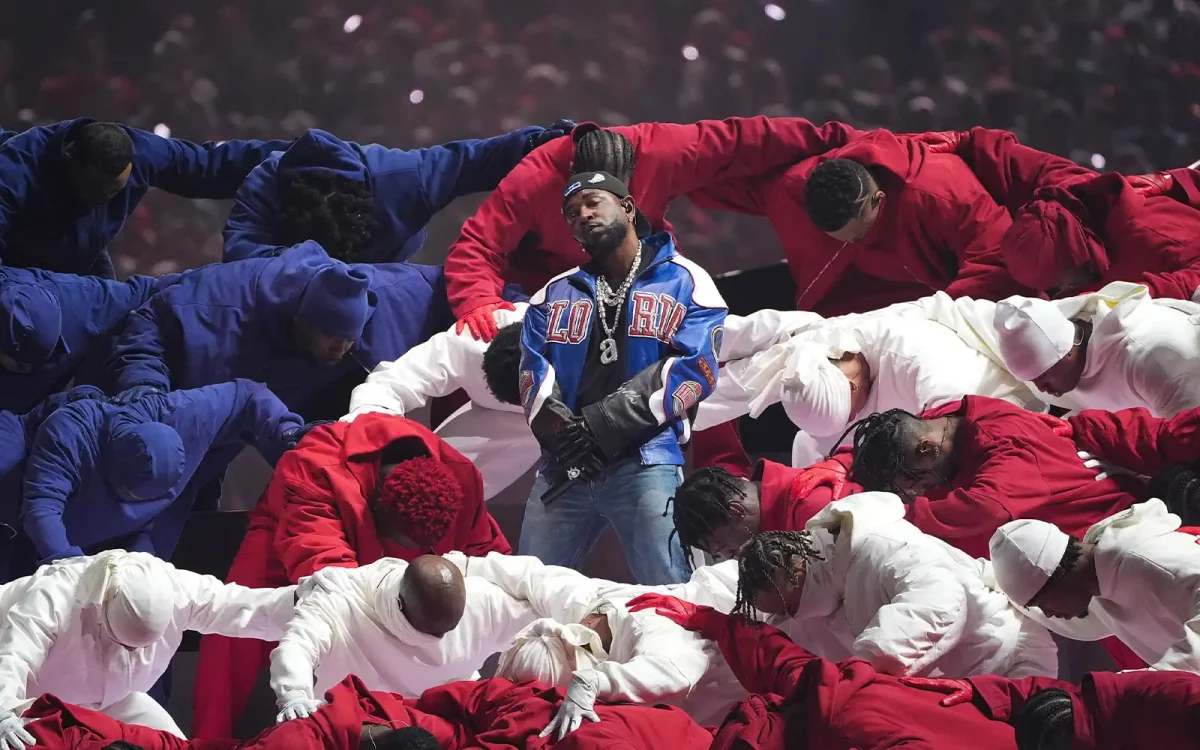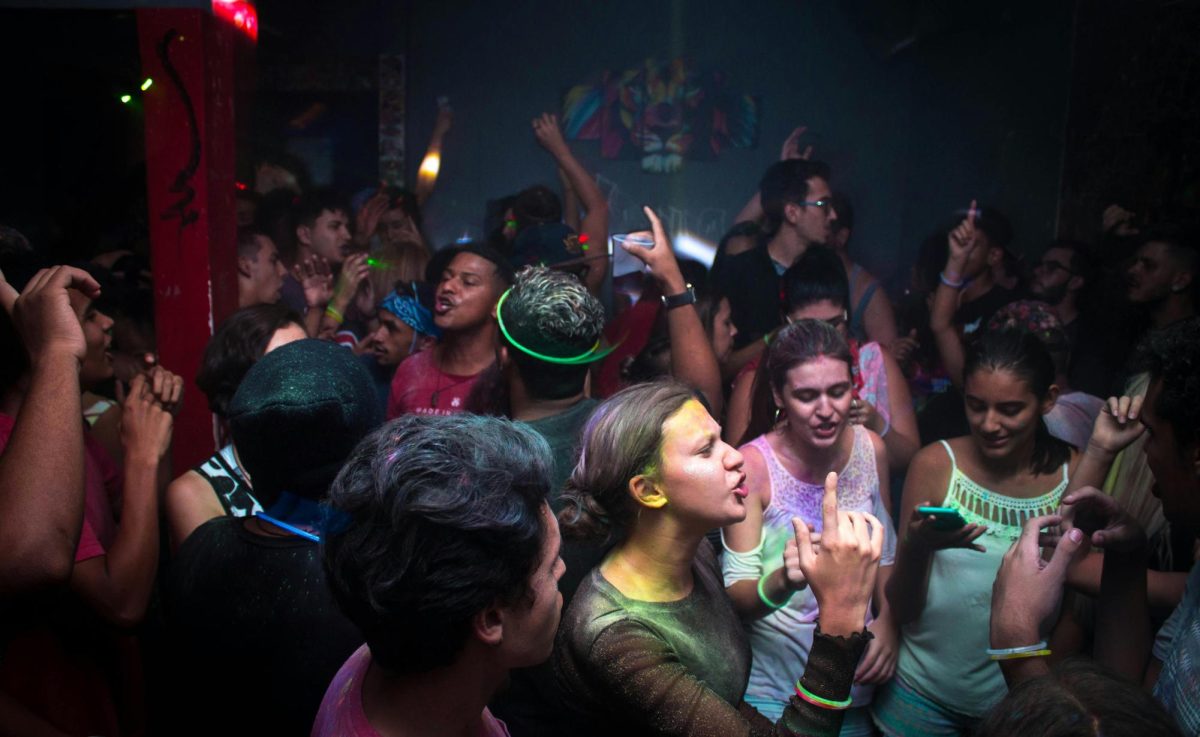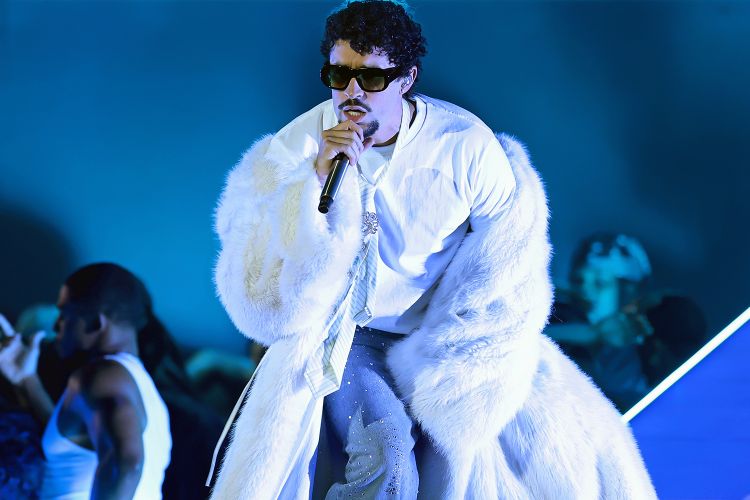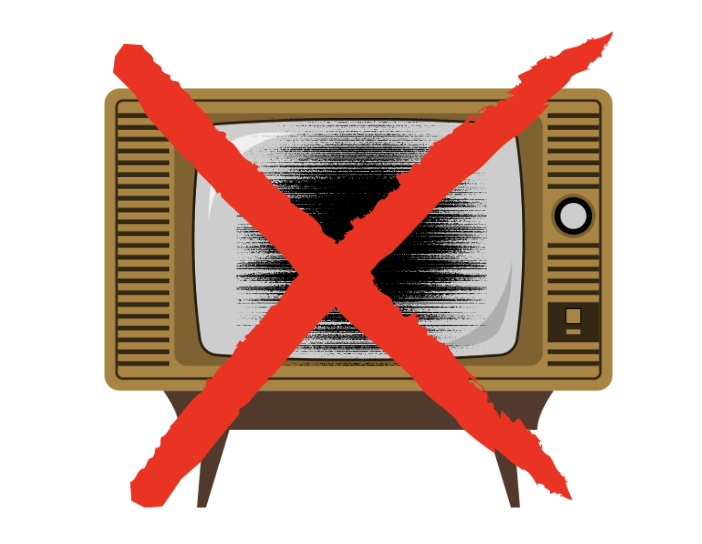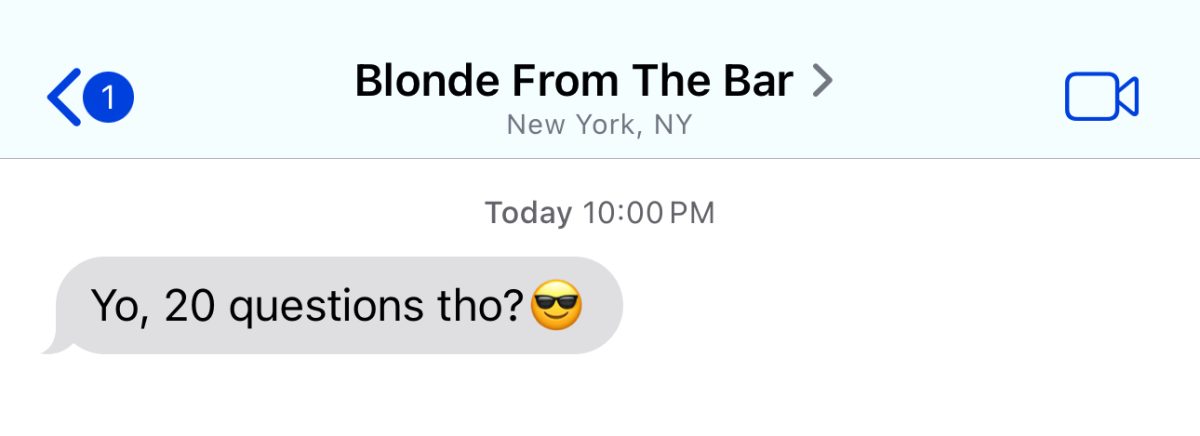Pulitzer Prize-winning rapper Kendrick Lamar has never shied away from delivering a clear and powerful message through his art and communication. From “To Pimp a Butterfly” to “DAMN.” and more recently, the viral success of “Not Like Us,” Lamar has always intertwined his music with social and political commentary. He took that to another level during his 2025 Super Bowl halftime performance. On one of the most watched stages in the world, Lamar transformed what is usually a spectacle of pure entertainment into a performance dripping in symbolism, historical references and critique of the current political climate. With each lyric and move, he made it clear that he was unafraid to challenge our nation’s new norms, demanding reflection not just from the country but its leaders.
Lamar, SZA and the ensemble of all-Black backup dancers donned a wardrobe of red, white and blue, reinforcing the Americana symbolism that would be present throughout the show. One of the most striking visual elements of the performance was the stage itself, designed as a tic-tac-toe board with video game controller symbols. Actor Samuel L. Jackson appeared as a satirical Uncle Sam, who declared, “This is the great American game,” further hinting at a systemic power imbalance that often treats marginalized communities like players in a rigged system, forced to follow rules they did not create. Uncle Sam has long been a symbol of American patriotism, but he was now a representation of the systematic criticisms often thrown at these communities. He was not a beacon of freedom, but an overseer and a reminder of the scrutiny, control and expectations placed on Black Americans.
Before “squabble up,” Lamar proclaimed, “The revolution about to be televised, you picked the right time but the wrong guy.” This was a direct inversion of the famous phrase from poet and musician Gil Scott-Heron’s 1971 work, “The Revolution Will Not Be Televised,” which suggested that true change could not happen through corporate-controlled media but rather through direct actions. Lamar’s declaration challenged that idea as he was using one of the biggest televised platforms in the world to bring political resistance into the mainstream. His performance also reflected the power of social media by exposing racial injustice, police brutality and economic disparity, making it impossible to be ignored. “The right time” suggests that the political climate is prime for revolution and accountability, and “the wrong guy” implies that Lamar refuses to be a pawn or spokesperson for empty performative activism. Referring to institutions that tend to embrace Black artists only when it is commercially viable but reject them and their messages when they question the status quo, Lamar’s line could be rejecting this selective support.
After “squabble up,” Uncle Sam cuts in, disapproving, “Too loud, too reckless, too ghetto. Mr. Lamar, do you really know how to play the game? Then, tighten up!” This led to a performance of “HUMBLE.,” where Lamar and his male dancers initially formed a tightly knit American flag, only for the flag to be split down the middle moments later. This powerful visual could represent both the divided state of America and the way America was built on the unrecognized labor of Black Americans. This is further referenced shortly before the penultimate song, “Not Like Us,” in which Lamar said, “40 acres and a mule–this is bigger than the music,” a direct reference to the unfulfilled promise made to formerly enslaved African Americans after the Civil War, which was meant to provide economic independence but was ultimately taken away. Lamar’s use of this imagery was not just a history reference but highlighted the ongoing economic disparities faced by Black Americans today, despite America presenting itself as a land of equal opportunity.
At the end of the final song, “tv off,” Lamar pointed to the camera, grinning, before the camera pans up to reveal the phrase, “GAME OVER,” written in lights in the crowd. This message rejected the rule of the “game” that Uncle Sam referenced throughout the entire performance. It could also be interpreted as a larger message to the establishment–politicians, corporations and media who manipulate and exploit marginalized communities while ignoring their struggles.
Unsurprisingly, Lamar’s performance sparked controversy. Some critics on X (formerly Twitter) claimed “[the show] is the regime’s response to Trump’s historic gains with black men.” Others have called it “easily the worst halftime show” they’ve ever seen, and even referred to it as a “DEI halftime show.” But in a country still grappling with its past and present, Lamar’s performance was a pointed reminder that music remains one of the most powerful forms of protest. And on America’s biggest stage, he ensured the nation was listening.

